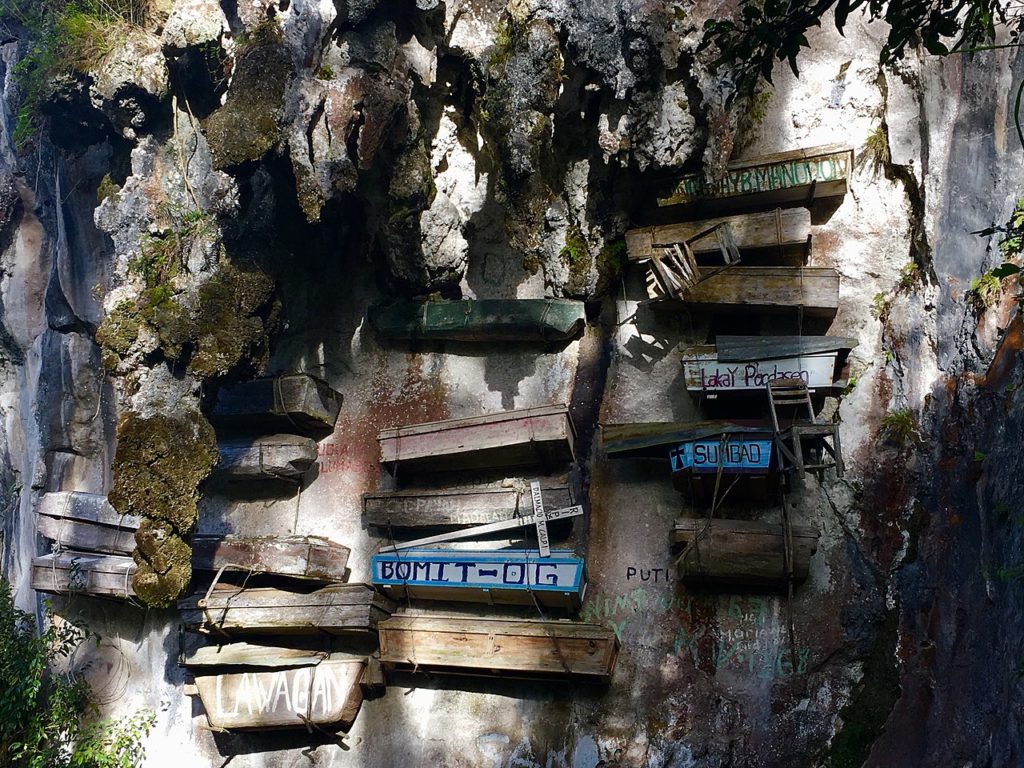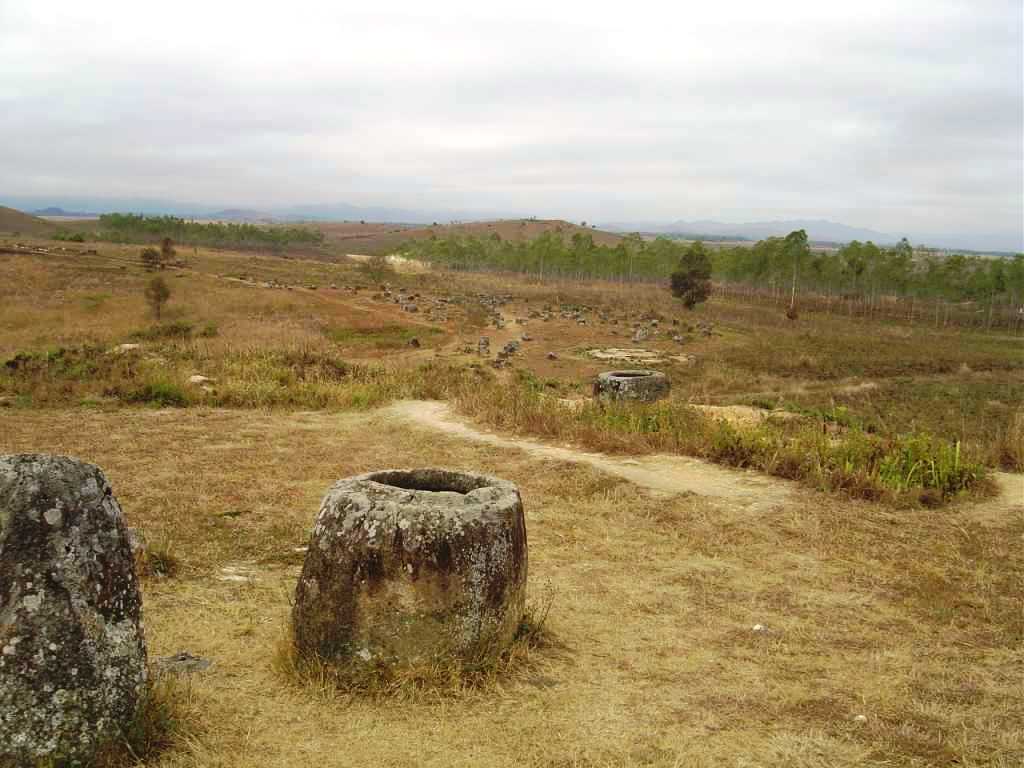1. Hanging Coffins – Sagada, Philippines
Hanging coffins are one of the funerary practices among the Kankanaey people of Sagada, Mountain Province, in the island Luzon of the Philippines. They have not been studied by archaeologists, so the exact age of the coffins is unknown, though they are believed to be centuries old. The coffins are placed underneath natural overhangs, either on natural rock shelves/crevices or on projecting beams slotted into holes dug into the cliff-side.
 2. Bokor Hill – Kampot, Cambodia
2. Bokor Hill – Kampot, Cambodia
Bokor Hill Station refers to a collection of French colonial buildings constructed as a temperate mountain luxury resort and retreat for colonial residents in the early 1920s atop Bokor Mountain in Preah Monivong National Park. The buildings are time-worn, yet still beautiful in their own eerie way.
 3. Penis Shrine – Phranang Cave Beach, Railay, Krabi, Thailand
3. Penis Shrine – Phranang Cave Beach, Railay, Krabi, Thailand
Located about 100 meters from the beautiful Phranang beach is a small temple hidden in the forest that worships lingams. The temple is said to bring good luck when it comes to children and fertility, so it is preserved and worshiped by the people.
4. Plain Of Jars – Phonsavan, Laos
The Plain of Jars consists of thousands of stone jars scattered around the upland valleys and the lower foothills of the central plain of the Xiangkhoang Plateau. The jars are arranged in clusters ranging in number from one to several hundred. Researchers (using optically stimulated luminescence) determined that the jars were put in place as early as 1240 to 660 BC.
 5. Kawah Ijen – Java, Indonesia
5. Kawah Ijen – Java, Indonesia
The Ijen volcano complex is a group of composite volcanoes located on the border between Banyuwangi Regency and Bondowoso Regency of East Java, Indonesia. It is known for its blue fire, acidic crater lake, and labour-intensive sulfur mining.
 According to Wikipedia, whereintheworldisnina.com
According to Wikipedia, whereintheworldisnina.com














